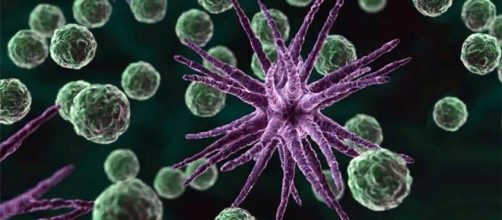Scientists at the Wellcome Trust Sanger Institute and the University of British Columbia have developed a new technique to study chlamydia, a very common sexually transmitted disease. Using a collection of gene editing and stem-cell technologies, the scientists were able to model the behavior of chlamydia when it attacks the immune system of humans. The scientists identified two specific genes from the human genome they found to play a crucial role in curing the disease.
In their study, the researchers created white blood cells that cure the disease to be able to study its behavior.
They also used CRISPR/Cas9 to genetically edit the human-induced pluripotent stem cells, and then see the effects of the genetic manipulation on the resulting white blood cells' ability to fight infection.
Their work was published in Nature Communications under the title ''Exploiting induced pluripotent stem cell-derived macrophages to unravel host factors influencing Chlamydia trachoma TIS pathogenesis''
The chlamydia disease
Chlamydia is one of the most common sexually transmitted diseases on the globe, with about 131 million infected people each year all over the world. Unfortunately, chlamydia is a dangerous disease that causes unwanted complications in humans like pelvic inflammatory disease and infertility.
What makes it more dangerous is that it doesn't have apparent symptoms in its initial stages, making it hard to know whether a person is infected or not. The danger of chlamydia led the World Health Organization in 2016 to encourage researchers to find new therapeutic ways for curing chlamydia and to have a more solid understanding of the workings of our immune system.
Modeling the disease
Using a specific kind of stem cells, the scientists were able to create a kind of white blood cell called a macrophage. Macrophages are a group of white blood cells that are produced by the human body that have a major role in fighting and curing chlamydia. The cells produced artificially had the same effect as the ones produced by the human body, which gives wide acceptance for the method used by the scientists in creating the white blood cells.
The model helps scientists have a bigger understanding of the actions taken by the disease when attacking the body.
One of the things that make chlamydia a disease that is difficult to cure is that it ''hides'' inside the cells, making it very hard to be traced and targeted. In addition, it can replicate from one cell to hundreds in a matter of day or two, increasing its danger and increasing the difficulty in curing it.

